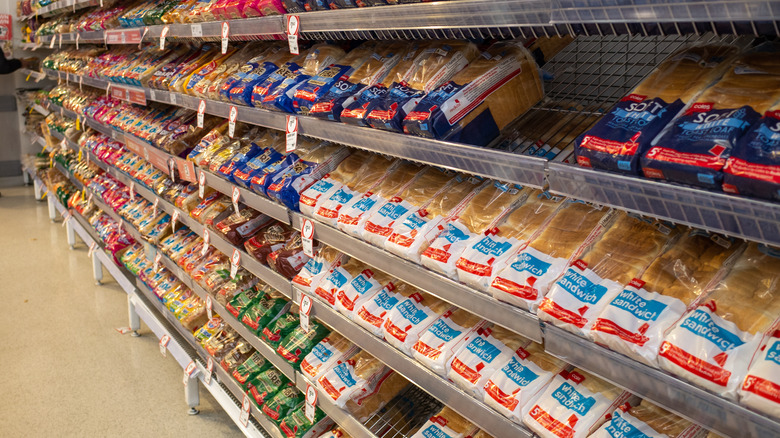Why You Should Read The Ingredients List Next Time You Buy Bread
Like many other aisles in the supermarket, the bread aisle has become overwhelming with the nearly endless options available. Of course, you can eliminate the need to enter the bread aisle by baking loaves at home, but we're not all modern-day Betty Crockers. While the bread selection has become more diverse and thankfully moved away from solely offering white Wonder Bread – which will always hold its nostalgic place in our hearts — not everything about the increase of options is good.
The fluff words added for marketing purposes can, at times, be misleading. There are new loaves popping up for different dietary needs or trends such as keto, gluten-free, or paleo. To help you filter through the selection, there are certain things to be aware of while choosing your next loaf. While brown bread with seeds on top might appear "healthier", it could, in fact, just be brown because some molasses was added to it (via Unlock Food). With this said, what are the things one should be looking for when reading the ingredients list for bread?
Less is always more
There are a few basic ingredients to bread: flour, yeast, water, and salt, according to Epicurious. This is where we should start when reading a bread ingredient list. A sweetener, an artificial emulsifier called datem, and some sort of preservative are typically added to extend shelf life and improve texture. Keep an eye out for natural preservatives like vinegar or honey. Pro tip: if your supermarket has a bakery section, head there. Although it may not always have better bread, there's a higher chance that the loaves will contain less ingredients and be fresher. Make sure to check the ingredients list to confirm.
Searching for whole grains in bread can be beneficial to your diet and increase your intake of nutrients. Incorporating whole grains into our diets can help reduce heart disease, certain cancers, and even diabetes, per Healthline. Where this gets tricky, as Unlock Food explains, is that whole wheat doesn't necessarily mean whole grain. In addition, stone ground, which is a process of making flour, doesn't always mean the flour is made from whole grains. Also, watch out for multigrain, this simply means that more than one grain is used, but not always whole grains.
All in all, it's important to know what you're eating and not just fall for the words on the label.

